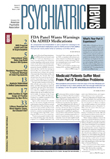In an effort to marshal the medical community's resources against the growing threat of expanding scope of practice for allied health professionals, the AMA has formed a national partnership to confront such initiatives nationwide.
The AMA Scope of Practice Steering Committee, formed at the urging of APA, will coordinate research to help medical specialty societies and state medical associations fight expansions in nonmedical scope of practice and improve information sharing among those groups.
The strength of the approach lies in the breadth of its membership, which will feed information on local legislative developments into the partnership so all of the members will know what legislative strategies allied health professionals are using nationally, according to Michael Maves, M.D., executive vice president and CEO of the AMA.
The committee will use $25,000 annual contributions from its initial members to fund research that helps refute the key arguments allied health professionals use to advance their measures in state legislatures. Initial research will accumulate national data on differences in training and education between physicians and other medical professionals and track the geographic distribution of such professions. Advocates of scope-of-practice expansion often mitigate differences between allied health professionals and physicians and claim such legislation is needed to improve health care access in areas underserved by physicians.
The partnership also will fund campaigns to stop scope-of-practice legislation in states where such bills appear likely to advance.
Issues surrounding prescriptive authority will be a major focus for the partnership, which was formed in part at the urging of APA Medical Director James H. Scully Jr., M.D. APA has helped lead physicians into the scope-of-practice fight following the enactment of laws in Louisiana and New Mexico that allow psychologists to write prescriptions.
“These are issues that go beyond any one specialty,” Scully said. Every medical specialty has concerns with a group of allied health professionals seeking privileges generally reserved for physicians.
The group will undertake projects focusing on the identification of what constitutes adequate training and establish relationships with all of the state medical boards and associations, Scully said. That coordination will help clarify the message to state legislators that scope-of-practice concerns are not turf issues for one or another specialty but are concerns of the profession of medicine.
Although the partnership aims to expand to all 50 states, its initial state medical society members are from Massachusetts, Colorado, Texas, California, New Mexico, and Maine. It also includes six medical specialty societies: APA, American Society of Plastic Surgeons, American Academy of Otolaryngology–Head and Neck Surgery, American Academy of Ophthalmology, American Academy of Orthopedic Surgeons, and American Society of Anesthesiologists. ▪
